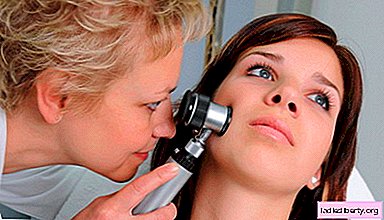
Neurodermatitis (or neurodermatosis) is a skin neuroallergic disease that is characterized by itching and characteristic skin symptoms.
In medicine, neurodermatitis is divided into limited and diffuse. The diffuse form of the disease is often called atopic dermatitis, although a number of doctors believe that atopic dermatitis is just one of the varieties of diffuse neurodermatitis. The opinion of experts agrees on one thing - in the development of neurodermatitis one of the main roles is played by the factor of hereditary predisposition to the disease.
Neurodermatitis, as a rule, is characterized by a chronic course and constant relapses. The treatment of this disease is complicated by the need for an integrated approach.
Neurodermatitis - causes
The causes of neurodermatitis are poorly understood. It is believed that the disease can occur due to disturbances in the state of the nervous system, diseases of the gastrointestinal tract, as a result of an allergic skin reaction. A person's predisposition to neurodermatitis is inherited. In only 10% of cases, neurodermatitis is a primary disease. Skin irritation typical of atopic dermatitis can be caused by allergies, stressful and conflict situations.
Neurodermatitis - Symptoms
The main symptom of neurodermatitis is pale pink papules, which are characterized by itching. Sometimes papules merge into continuous foci of rash with subsequent lichenization (compaction of the skin, impaired pigmentation and increased skin pattern). Localization of foci occurs on the flexion surfaces: knees, elbows, wrists, and so on.
Change in the skin also occurs on the face, back, chest. The patient complains of itching. Due to constant calculations, microtrauma, cracks are formed, the color of the affected skin changes. It is possible to attach a variety of infections.
In patients with neurodermatitis, sleep disturbance, hypotension, adynamia, loss of appetite, hypoglycemia, loss of appetite are observed, weight loss, tearfulness and irritability are also possible.
Neurodermatitis is characterized by a long recurrent course. In case of incorrect therapy, the patient's condition may worsen, up to erythroderma.
Neurodermatitis - diagnosis
Diagnosis is straightforward. Usually it is based on the clinical picture of the disease, a well-collected medical history, data from biochemical and immunobiological studies, and the number of eosinophils and lymphocytes in the blood is also taken into account.
To date, there are no clear biochemical and immunological criteria that can predict the severity of neurodermatitis.
Neurodermatitis - treatment and prevention
1. The purpose of antihistamines (tavegil, clarithin, fencarol, cimetidine), as well as hyposensitizing substances (hemodesis, sodium thiosulfate, vitamins A, B, C).
2. Prescription of sedative medicines (tincture of valerian, peony, motherwort), tranquilizers (mebicar, oxylidine, trioxazine, amisil) and antipsychotics (thioridazine, levomepromazine).
3. Topical application of specialized ointments and creams.
4. Introduction to the skin around the foci of neurodermatitis hydrocortisone.
5. The use of corticosteroids.
6. Appointment of physiotherapeutic procedures, such as UV irradiation, currents, spa treatment.
7. Compliance with diet and daily routine.
Prevention of neurodermatitis is reduced to a rational diet, which involves the rejection of spicy, smoked, alcoholic beverages and the like. An important role is played by the timely diagnosis and treatment of diseases that can cause the onset of neurodermatitis (nervous diseases, diseases of the digestive tract, endocrine system).











